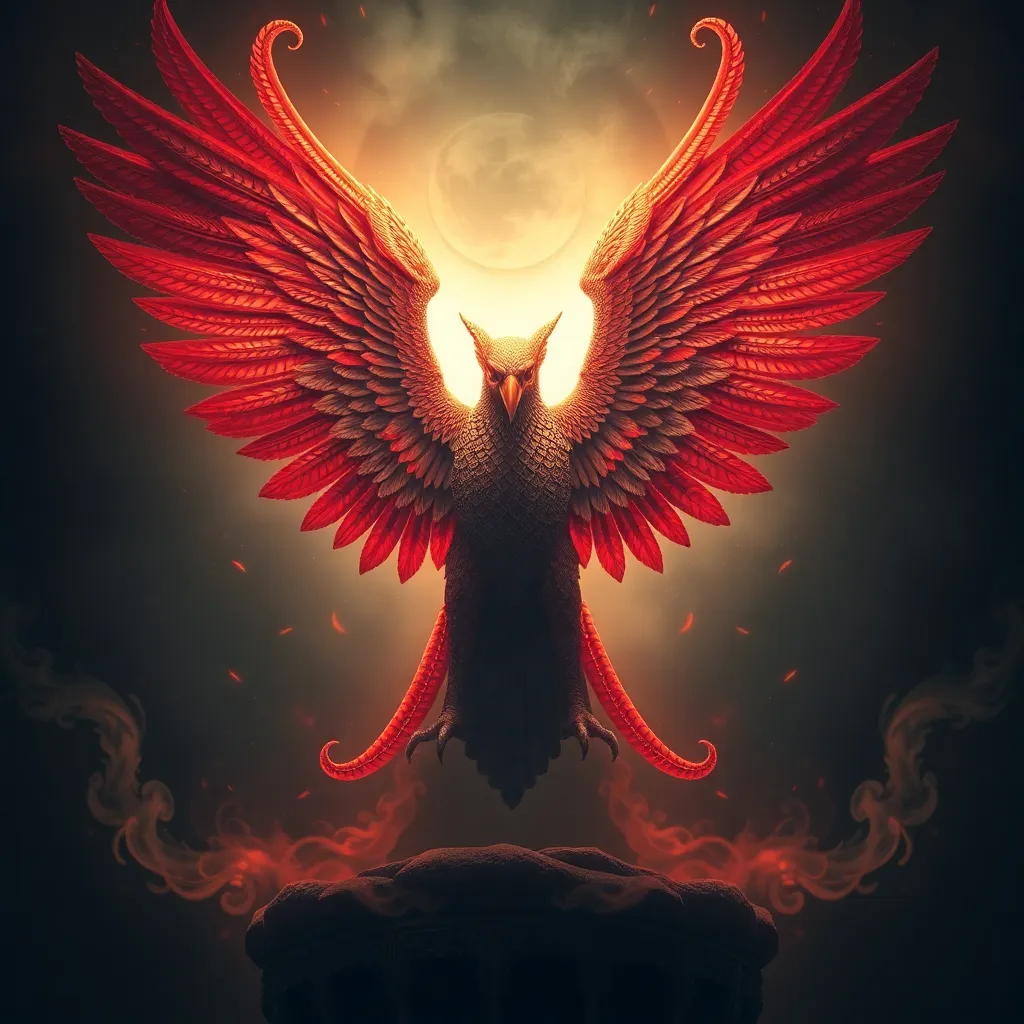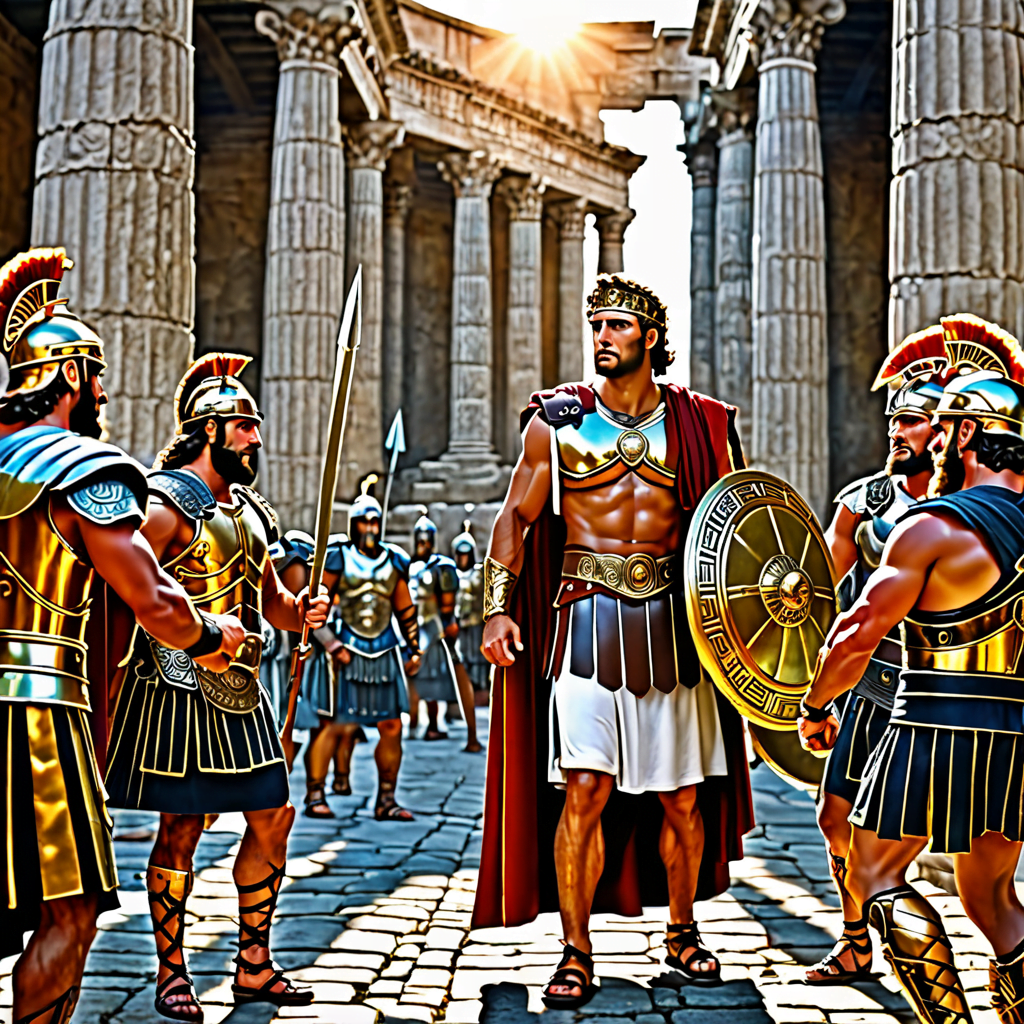Garuda: A Celebration of the Avian Deity’s Legacy and Cultural Impact
I. Introduction to Garuda
Garuda is a prominent figure in Hindu and Buddhist mythology, often depicted as a magnificent bird or a man with bird-like features. He is not only a mythical creature but also a symbol of strength, speed, and divine power. Garuda’s narratives and representations span across various cultures, showcasing his significance and revered status.
In different cultures, Garuda represents different ideals, often embodying the qualities of a protector and a symbol of freedom. His imagery and stories are woven into the fabric of spiritual beliefs, art, and national identity, highlighting his enduring legacy.
II. Mythological Origins of Garuda
Garuda’s origins can be traced back to ancient texts and scriptures, prominently featured in the “Mahabharata” and the “Ramayana.” These epic tales illustrate Garuda’s birth and his profound connection with the divine.
According to myth, Garuda is the son of the sage Kashyapa and Vinata, a celestial bird. His story is intertwined with his relationship with Lord Vishnu, the preserver of the universe. Garuda is often depicted as Vishnu’s mount, embodying both power and loyalty. His journey includes the famous tale of his quest to obtain the elixir of immortality, which further solidifies his role as a key figure in Hindu mythology.
III. Symbolism and Attributes of Garuda
Garuda is rich in symbolism, embodying various attributes that resonate deeply within spiritual traditions.
- Representation of Speed and Power: Garuda is often depicted as a swift creature, capable of soaring through the skies with incredible speed. This characteristic symbolizes the power of the divine and the swiftness of justice.
- Role as a Protector: Garuda serves as a guardian against evil forces. His fierce demeanor and protective nature make him a favored deity among devotees seeking safety and strength.
IV. Garuda in Hinduism and Buddhism
Garuda’s significance extends beyond Hinduism into Buddhism, where he is acknowledged as a powerful figure.
A. Garuda’s Role in Hindu Rituals and Iconography
In Hindu rituals, Garuda is frequently invoked for protection and healing. His image is commonly found in temples and homes, symbolizing divine presence and safeguarding against negativity. Iconographically, Garuda is depicted with a human torso, wings, and an eagle-like head, representing the synthesis of earthly and celestial qualities.
B. The Significance of Garuda in Buddhist Teachings
In Buddhism, Garuda is known as “Vidhyadhara,” a creature that embodies wisdom and is often associated with the protection of the Buddha and his teachings. He is depicted in various Buddhist texts as a figure who can overcome obstacles and protect practitioners on their spiritual journey.
V. Artistic Representations of Garuda
Garuda has inspired countless artists across ages, leading to diverse artistic representations.
A. Depictions in Sculpture, Painting, and Architecture
In Hindu and Buddhist temples, Garuda is often sculpted in intricate designs, showcasing his majestic form. Paintings from ancient times to contemporary art highlight his ethereal beauty and powerful presence.
B. Modern Interpretations and Adaptations in Popular Culture
Today, Garuda continues to influence modern media. He has appeared in films, books, and graphic novels, often serving as a symbol of heroism and protection. His character resonates with audiences, bridging ancient mythology with contemporary storytelling.
VI. Garuda in Southeast Asian Cultures
Garuda’s influence extends significantly into Southeast Asia, where he is adopted as a national symbol in various countries.
A. Influence on National Symbols and Emblems
Countries like Indonesia and Thailand feature Garuda prominently in their national emblems, symbolizing strength and independence. In Indonesia, Garuda Pancasila represents the country’s foundational principles, reflecting its cultural significance.
B. Garuda in Folklore and Traditional Practices
In Southeast Asian folklore, Garuda is often portrayed as a heroic figure battling serpentine creatures. He is celebrated in traditional dances, ceremonies, and festivals, showcasing the region’s rich cultural heritage.
VII. Contemporary Relevance of Garuda
In the modern era, Garuda’s legacy continues to thrive through various forms of media and spiritual practices.
A. Garuda in Modern Media and Literature
Garuda’s character has found a place in contemporary literature, films, and video games, often depicted as a powerful guardian figure. His story reflects themes of courage, loyalty, and the struggle against evil, resonating with modern audiences.
B. The Ongoing Legacy of Garuda in Global Spirituality
As a symbol of divine protection and strength, Garuda continues to inspire spiritual practices worldwide. His imagery is incorporated into various forms of meditation and healing rituals, reflecting the universal appeal of his character across different cultures.
VIII. Conclusion: The Enduring Legacy of Garuda
Garuda stands as a testament to the rich tapestry of mythology and cultural heritage. His stories and representations have transcended time and geography, leaving an indelible mark on spiritual beliefs and artistic expressions.
In summary, Garuda’s cultural impact is profound, serving as a reminder of the importance of preserving mythological heritage. As societies evolve, the stories of deities like Garuda remind us of the values and ideals that unite humanity, encouraging a reflection on the timeless nature of these narratives.


